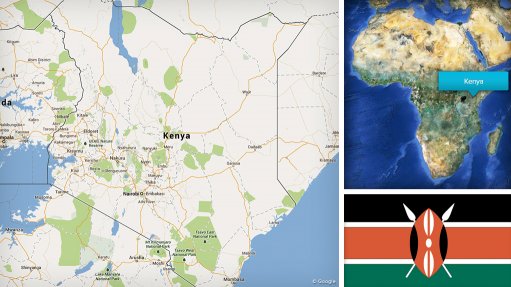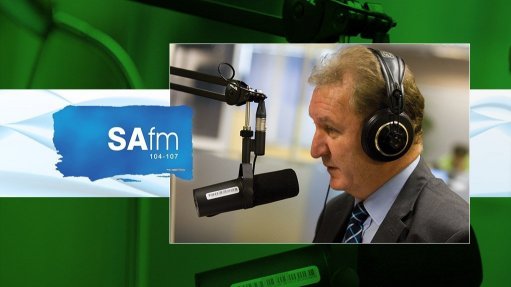Purchase subsidy would be ‘most appropriate’ EV incentive model – Naamsa
Naamsa | The Automotive Business Council has proposed the “provision of a direct, fixed new-energy vehicle purchase subsidy” as the most appropriate incentive model to support South Africa’s move to electrified vehicles (EVs).
EVs include battery electric vehicles (BEVs), hybrid electric vehicles (HEVs) and plug-in hybrid vehicles (PHEV).
Naamsa says the subsidy is necessary, given the “price sensitivity of the South African market”, as well as the substantial price gap between NEVs and internal combustion engine (ICE) vehicles.
“The value of the subsidy will be determined by the type of new-energy vehicle (NEV) being subsidised,” says Naamsa.
“An incentive of this kind would optimise support for entry-level NEVs, with less benefit for more expensive NEVs.”
Governments around the world have used subsidies of various forms to boost EV sales in support of reducing their carbon footprint.
Naamsa released its thought leadership discussion document on NEVs for South Africa last month.
This comes as the local automotive industry still awaits the release of government’s NEV policy, set to guide and support the country’s transition from ICE vehicles to EVs.
The Department of Trade, Industry and Competition (DTIC) in May 2021 released a Green Paper on NEVs, promising a White Paper in October of the same year.
However, the department has failed to publish the White Paper.
“Once there is a clear policy directive and commitment from government, this should allow all our original-equipment manufacturers (OEMs, or vehicle manufacturers) to act with speed, and for the DTIC to finalise an NEV White Paper without further delay,” says Naamsa CEO Mikel Mabasa.
NEV sales in South Africa showed a significant year-on-year increase of 431.7% last year, up from 896 units in 2021, to 4 764 units in 2022.
However, this number is negligible as a percentage of total new-vehicle sales, at 0.88%.
Despite lower running costs, the higher upfront price tag of NEVs (linked to higher production costs, mainly related to battery costs) has been the main inhibitor to increased NEV uptake in South Africa, believes Naamsa.
This is exacerbated by value-added tax, an ad valorem excise duty based on a sliding scale up to 30%, import tariffs, and limited product availability, especially in terms of more affordable EVs.
Currently, the average international price gap for NEV models relative to their ICE
equivalents is 12% for PEVs, 43% for PHEVs, and 52% for BEVs, reports Naamsa.
‘Rapid Adoption’
Mabasa states that the rapid adoption of newer drivetrain technologies, both in local production and in the domestic sales market, is critical to the South African automotive industry’s long-term success and growth.
“The only way to have a successful automotive manufacturing base is to
keep up with technological developments.
“The South African automotive industry cannot be running on one development technology track, whilst the rest of the world is way ahead on the same track.
“If we want to remain globally competitive, we have no option but to play with
the big global players who are leading the NEV charge,” he notes.
“Regrettably, South Africa has been painfully slow in finalising its governance and policy transformation priorities.
“We need to urgently enhance existing auto policies to facilitate a high-yielding business environment, including developing an attractive fiscal and regulatory framework that makes South Africa a highly competitive and compelling location for NEV production.
“The rapid technological advancement in the automotive industry and the global commitment by world economies to a greener future mean the evolution in vehicle production will rapidly develop in the next ten years, far more than it did in the last 100 years.
“This evolution requires a clearly thought-out public policy regime and prudent fiscal planning,” says Mabasa.
Apart from a purchase subsidy, Naamsa’s thought leadership document also calls for expanded support to vehicle and component manufacturers in order for South Africa’s largest manufacturing sector to survive the global shift to EVs.
The document states that the domestic auto sector is at risk of losing more than 50% of its production volume from July 2025, which sees the proposed introduction of Euro 7 emission regulations in Europe, to 2035, which will witness the banning of ICE drivetrains in almost all European countries.
Europe is South Africa’s biggest new-vehicle export market.
The biggest component export from South Africa is also the catalytic converter, which is tied to ICE vehicle production.
Only two vehicle manufacturers currently produce HEVs and PHEVs in South Africa. There is no BEV production.
Comments
Press Office
Announcements
What's On
Subscribe to improve your user experience...
Option 1 (equivalent of R125 a month):
Receive a weekly copy of Creamer Media's Engineering News & Mining Weekly magazine
(print copy for those in South Africa and e-magazine for those outside of South Africa)
Receive daily email newsletters
Access to full search results
Access archive of magazine back copies
Access to Projects in Progress
Access to ONE Research Report of your choice in PDF format
Option 2 (equivalent of R375 a month):
All benefits from Option 1
PLUS
Access to Creamer Media's Research Channel Africa for ALL Research Reports, in PDF format, on various industrial and mining sectors
including Electricity; Water; Energy Transition; Hydrogen; Roads, Rail and Ports; Coal; Gold; Platinum; Battery Metals; etc.
Already a subscriber?
Forgotten your password?
Receive weekly copy of Creamer Media's Engineering News & Mining Weekly magazine (print copy for those in South Africa and e-magazine for those outside of South Africa)
➕
Recieve daily email newsletters
➕
Access to full search results
➕
Access archive of magazine back copies
➕
Access to Projects in Progress
➕
Access to ONE Research Report of your choice in PDF format
RESEARCH CHANNEL AFRICA
R4500 (equivalent of R375 a month)
SUBSCRIBEAll benefits from Option 1
➕
Access to Creamer Media's Research Channel Africa for ALL Research Reports on various industrial and mining sectors, in PDF format, including on:
Electricity
➕
Water
➕
Energy Transition
➕
Hydrogen
➕
Roads, Rail and Ports
➕
Coal
➕
Gold
➕
Platinum
➕
Battery Metals
➕
etc.
Receive all benefits from Option 1 or Option 2 delivered to numerous people at your company
➕
Multiple User names and Passwords for simultaneous log-ins
➕
Intranet integration access to all in your organisation
















